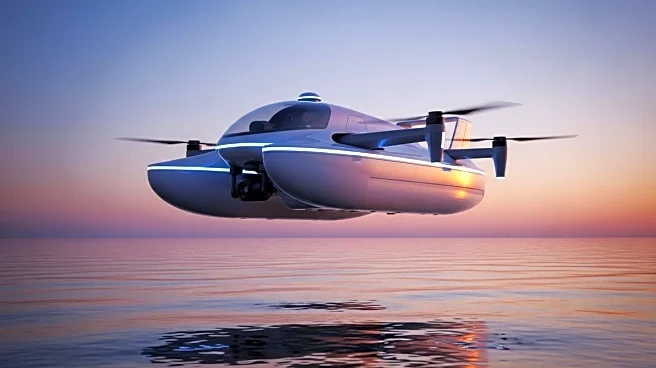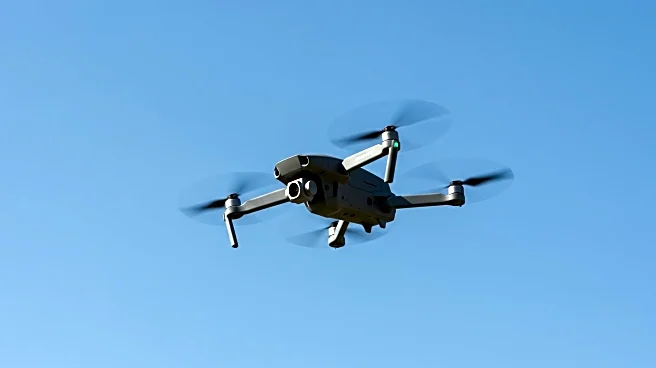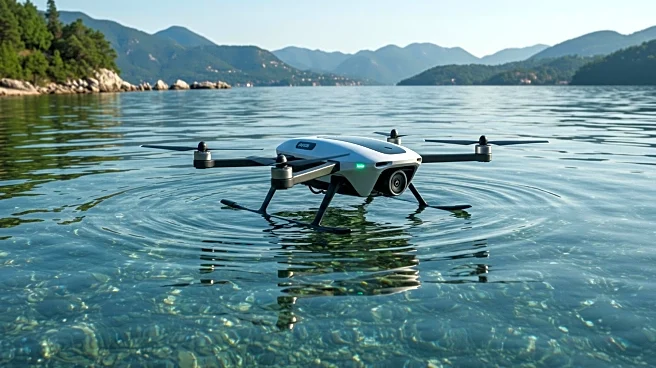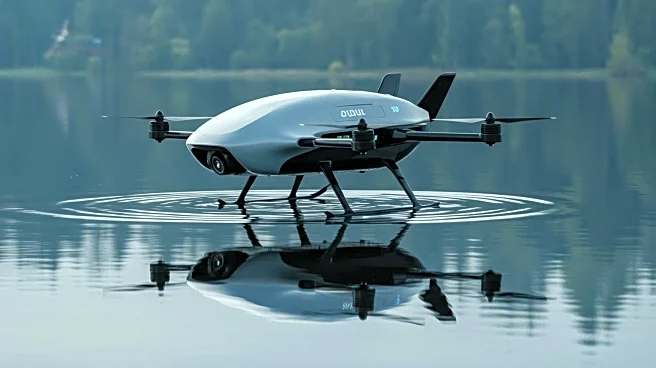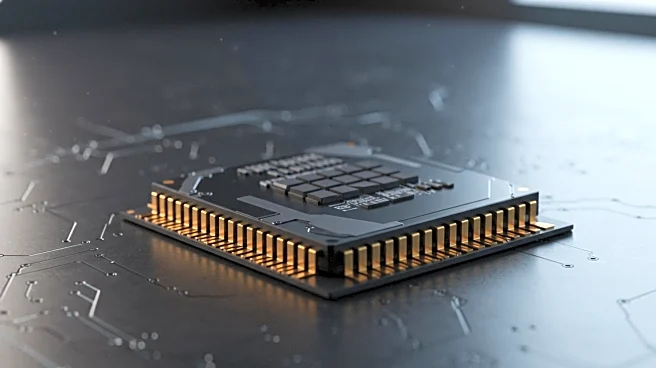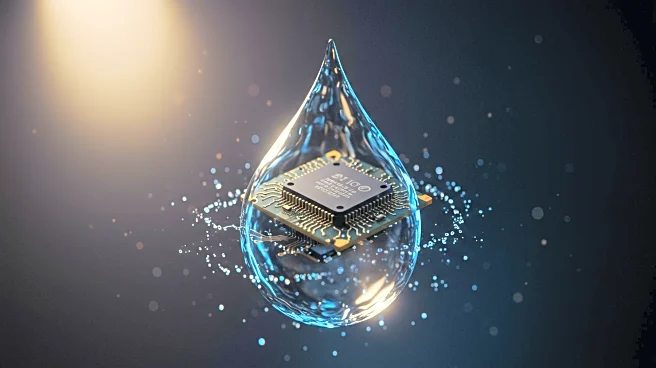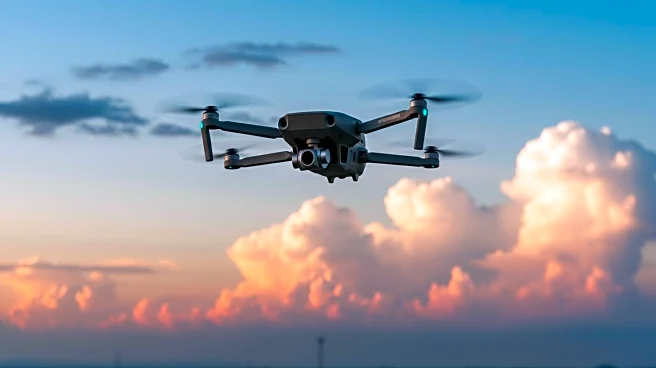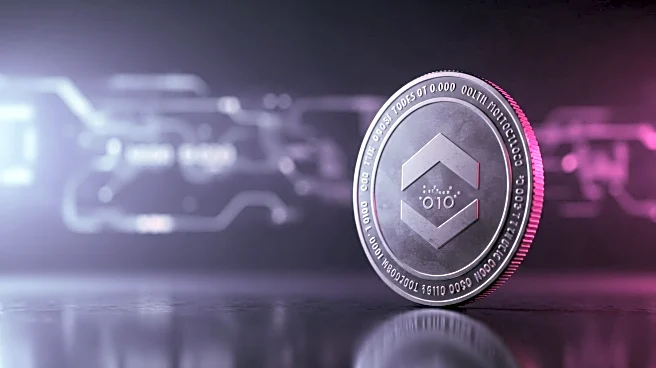What's Happening?
Chinese drone manufacturer HOVERAir has launched its latest innovation, the AQUA, a waterproof self-flying drone designed for capturing footage during water-related activities. The AQUA drone is compact, lightweight, and features a buoyancy capability, allowing it to take off and land on water surfaces. It is equipped with a 1.6-inch AMOLED display for easy control and a built-in camera with a 1/1.28-inch CMOS sensor, capable of recording up to 4K100P footage. The drone includes 128GB of built-in storage and offers a maximum flight time of 23 minutes. The AQUA is powered by AI and comes with a remote called the LightHouse, which ensures the drone remains within range during use.
Why It's Important?
The introduction of the AQUA drone marks a significant advancement in the drone industry, particularly for water sports enthusiasts who require durable and reliable equipment to capture high-quality footage. The waterproof feature and self-flying capability reduce the risk of damage to camera gear, making it ideal for activities like kayaking, surfing, and sailing. This innovation could lead to increased adoption of drones in recreational and professional water sports, potentially boosting the market for specialized drone technology. Additionally, the AQUA's lightweight design and lack of need for registration in most countries make it accessible to a broader audience.
What's Next?
The AQUA drone is available for preorder on Indiegogo, with shipping expected to begin in December 2025. As the drone enters the market, it may prompt other manufacturers to develop similar waterproof and self-flying technologies, potentially leading to more competitive offerings. Consumers and professionals in the water sports industry will likely evaluate the AQUA's performance and durability, influencing future purchasing decisions and technological advancements in the drone sector.
Beyond the Headlines
The AQUA drone's AI-powered self-flying capability raises questions about the future of autonomous technology in consumer electronics. As drones become more independent, ethical considerations regarding privacy and safety may arise, necessitating discussions on regulations and responsible usage. Furthermore, the drone's ability to handle winds up to 33 knots highlights its potential for use in challenging environments, expanding its application beyond recreational activities.
